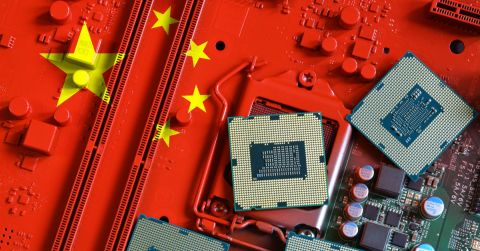AR & VR: Game Changers in Modern Business Solutions

Dive into the world of AR & VR, the game changers in modern business solutions with this episode of the CTRL+Listen Podcast. Host James Sweetlove chats with Kristopher Blom and Karel Kucera from the innovative company Misterine. In this insightful video, they explore the transformative impact of Augmented Reality (AR) and Virtual Reality (VR) on the business sector. Discover how these technologies are not just futuristic concepts but are actively reshaping the way businesses operate, train, and engage with their customers.
From enhancing training procedures with immersive experiences to revolutionizing product demonstrations and customer interactions, AR and VR are setting new standards in business innovation. Join them as they delve into real-world applications, expert insights, and the future potential of AR and VR in business. Whether you're a tech enthusiast, a business professional, or just curious about the evolving digital landscape, this video is your gateway to understanding how AR and VR are paving the way for a more dynamic, efficient, and engaging business world.
Listen to the Episode:
Watch the Episode:
Episode Highlights:
- AR Areas for Misterine
- Democratization of AR
- European Space Agency Collaboration
- Effectiveness of AR for Training
- How AR Will Impact the Future of Business
Links and Resources:
For more information about Misterine's groundbreaking work, check out their website
For more about Kristopher, get in touch here
For more about Karel, get in touch here
Transcript:
James: Hi everyone this is James from the CTRL+Listen by Octopart today we have a guest for you well two guests from the same company we have Kristopher and Karel from Mr they are an augmented reality company making some really cool products just want to get to know them see what the company is about thanks for coming on the show great to talk to you.
Kristopher: Thank for having us on. Thank you.
James: Anytime do you want to just tell us a little bit about the company sort of what the product is and what your mission is?
Kristopher: Basically the company Misterine is focusing on augmented reality plus virtually reality currently we are working on extension of our platform and our aim is that the companies can basically utilize this by themselves firstly so we are aiming at industry companies so that they can use it towards their customers consumers people and and the second point is that it's fairly safe so it's protecting IP sort of thing so we are mainly focusing on using using the product on the computer itself that the companies can decide what to push out and that it also in the end application it also works without without the data connection to the servers Etcso we can download it to the to the phone or to the tablet or to the glasses and use it offline also.
James: And for anyone who doesn't understand the differences what is the main difference between augmented reality and virtual reality?
Kristopher: Virtual reality is basically completely different environment so if you want to play a game sci-fi game and complete immersion emerging that you are basically in a complete complete Different World augmented reality or extended reality is that you are in your own environment in real world and the computer through some screen is adding additional objects into it so it can be used to basically walk around some machine to show some Training Concepts etc where you actually need to interact with the environment or where you need to interact with other people which is a bit harder in virtual reality.
James: So augmented reality obviously seems like something that could be applicable to a lot of different areas of business what are some of the main ones that you're using it for?
Kristopher: Well as it's visual you can use it for anything but mainly its biggest use is in showing complex things so when you need to convey complex things to someone else some other person so it's either a manual where you need to show okay how to repair some stuff or a training how to operate some machine which is not there in some specific environment for example also or when you want to show some specific customized product to a customer that customer comes and he says I want this kitchen this kind of kitchen with this kind of equipment and you can suddenly show it to the customer.
James: Oh that's great so you can sort of use it as a broader like more holistic approach or a more specialized approach whatever you need it to be.
Kristopher: Yes but as I said you know you need to con you you are using it whenever you need to convey messages visually but of course know if you want to convey simple message it's easier to talk than to program some stuff of course you can do so but most of the time it's really about a lot of paper large written manuals where you can suddenly make things easier and also make people understand easier because when they suddenly can see how the things are being done how they are supposed to be done or how the kitchen which you want will look in your house that's something which the people can really .
James: Yeah I definitely see that as is a huge plus and this technology has been around for a little while now I've seen it progressing over time obviously the one people would know is Pokémon go which everyone talks about what do you sort of see as like the future trajectory of this technology how far can you think it can go?
Kristopher: I think the main point is to get to the hardware ready and operational because currently the glasses are perfect nice for VR or AR whatever you want but it's still about I don't know 20 million pieces there while phones it's over two billion three billion pieces of phones and tablets and these things so the distance in the hardware possible is fairly big and this basically needs to this needs to get and of course it's a question also you need some content because without content you don't usually move the hardware for worth that much so it's chicken or an egg but we are waiting basically mainly for the glasses that is the main trend which what the whole industry.
James: So when you say waiting for the glasses you want those to become sort of a more commonly held item more accessible.
Kristopher: Yes exactly a more common item but also like the technology needs to also progress because it's about batteries about computing power in the glasses etc about making it easy for the people to use so that is the main point it is exactly the same as phones.
James: Right that makes s of sense you have some some products that I want to ask about there was Studio server and the app what are each of these and how do they sort of interact with each other?
Kristopher: Yeah so in our platform basically app is the end product what the end user sees right it's what gives basically the augmentation into the world and right now this has then done on IOS and Android so you take out your phone you're looking at whatever it is you're going to look at and you're seeing it augmented into the re the real environment and what that could be changes a lot depending on the case but how that gets there is then through the other two parts so in the studio is where we have a no code solution where it's intended to be in the our clients so business clients premises where they can actually go do this all this stuff themselves traditionally in AR you hired a company and gave them a lot of money and they built something for you in six months or whatever and and this is actually you just take your data it's on your premises where you want it and you can then create something that will be published out either privately or publicly so there's this level of security that can be put in there and through our servers but they can also be named servers for each company kind of thing it pushes out to the to the app and therefore can be out there and then the app displays it it can be fairly precise on how it is or fairly fluid with the kind of stuff that you see in go and the rendering Etcis pretty good on Modern phones so you can have something that's pretty impressive right there so it's it's a product pipeline that's there but the intention is to get it in the hands of companies there more than that and let them be able to do it make it accessible basically yeah the point was basically to make the technology available to other companies without ex that they don't have to use experts with some specific expertise that's first thing which we were aiming at and the second one is that they are able to push out the content in a matter of hours.
James: So it sort of seems like a almost a like democratization process of of augmented reality making accessible to everyone as opposed to just the heavy hitters with big wallets to spend.
Kristopher: Yes basically yes so also focusing on companies so also the license terms are basically adjusted to this so that basically there's no limitation on the end users etc so that you don't have issues if somebody's downloading it or not etc.
James: So interesting I wanted to ask as well that you had collaborated with Esa for special projects.
Kristopher: Yeah so with the European Space Agency we've had two projects the first one was Viper which actually Viper kind of laid the foundation for our current product the AR stuff there Issa is interested in this kind of thing where they can augment onto physical things so their use cases and a partner that was an industrial partner is very much about putting it on to so you have a physical object and the person doing maintenance in this scenarios actually sees what they're supposed to do on the object itself so this one doesn't make sense but if I was going to fix the Mouse it would show me exactly where I need a pride to open up the mouse to be able to get inside kind of thing and every step would be highlighted exactly and it's this then this system to be able to do it where that data needs to be protected because it's not something they can put into a cloud platform or something like that you know it's very proprietary so that CAD data that's the input for that kind of system in this case then can't be given to anybody else vas the second project which is still ongoing is to take the same kind of principles of what we've done with them in the past and Viper but to add it to VR training so instead of augmenting on a physical object basically we have a system that allows you to augment onto the virtual object in VR to train how to do it and the same kind of augmentations to say okay this is the way to do it but we've gone beyond that and also have a system that allows you to Define how that manual for training looks by actually performing the actions in VR so it basically means that and that's what's interesting that you don't have a person clicking on a computer doing the lecture or something for the astronaut or somebody else but you basically tell to the expert who designed the machine or the object and you will put them into the virtual environment and the expert will say well it's supposed to be done like this and he's basically doing it in the virtual environment and the computer records all these activities and then somebody just do some post production so says okay this is one step or this is second step I need to add Mark here a question mark or some exclamation mark or put there you need to tighten the screws for this Force Etcso you basically add there some additional stuff and then you can push it into the push it into the lecture immediately so it makes it fairly easier for to make again the lectures and it also makes it easier to observe what is being done because for the it's critical they also you know figure out if it was designed correctly so maybe somebody will do it somehow in a different way but they also need to optimize because they are there for certain amount of time they need to do a lot of things so they are also optimizing it from the perspective of time.
James: Interesting that's what has me wondering have you done any studies sort of on effectiveness of of this form of training versus like reading a manual is is it more effective this way when you actually see it?
Kristopher: We have not but there has been studies in the past excuse me this has been looked at in in classic VR and even a little bit our literature back many years already and basically anything that's procedural so that you're going through a procedure it's highly effective it's as effective as real training on real devices and and definitely more than just anything that's abstract where you just have you know read a manual and you have no context right sure and then as something Carl kind of mentioned earlier with the AR case one of the powers is you don't have to have that physical object there right it's it's VR it's just there we can do the same kind of thing with the AR platform we already have where you can visualize something in front of you in AR and even as a group right so we can have it I don't know whatever our new product is that we're pitcing to our big boss in the company we can actually have it kind of visibly in the middle of the scene the room in the meeting on the meeting table and actually everybody be looking at it and seeing it from different perspectives and be able to converse as if it was actually there and VR is just more powerful.
James: Great no I can definitely see what the benefits of this versus some more traditional way of doing things.
Kristopher: I think the main point Khris is saying actually it is very much powerful especially if you look at it from that you can do it today with your phone yes the point you know so the company don't have to suddenly spend large amounts of money for specific equipment take care of it hire specific people you can do it with your phone so that's the point.
James: Yeah imagine like say say it's you have something like this for how to repair a car engine if a car breaks down and you break down on the side of the road you don't have a manual with you or anything like that but you can pull up the guide and see exactly how to do it I'm sure that's incredibly useful.
Kristopher: Exactly.
James: I want to ask as well sort of what what role do you see AR tech playing in the future of business overall is this something you see becoming more normalized?
Kristopher: I definitely think so especially you can see also movement from the large technological companies investing into into this from the perspective of the business like there's consumer and business perspective consumer of course we want fantasy worlds and nice Stuff Etcbut business the key point is actually real environment and safety this is really critical for the business that the people understand what to do how to do and they are basically in a safe environment and they understand the logic and steps behind and ideally that it's a group which is being trained together where can be there also some interaction so definitely the business scenario will be pretty interesting for the ARespecially when the new hardware is read more available which is I think we are currently seeing that it's it it's .
James: Now I want to ask as well do you have any future development plans in place I know you mentioned when we were talking via email that there was going to be a VR version of the Misterine studio.
Kristopher: Yeah so that's kind of we be built upon what we've done for the ISA project for Varia so it it's kind of Builds on top of our existing Studio that allows you to build the AR manuals or the ARcontent but allows you to add the interactivity the more that the object actually behaves in a way like that the real object does which is extending it in into a kind of a digital twin kind of space and then of course the VR side that you can actually view it and and be able to interact with it and train with those things so yeah the VR extension to this is one of the things where we're working on basically it means that we want to allow the experts to go into the virtual environment do the expert procedure with actually interacting with the objects that is recorded somebody does a post production and then it's either used for virtual trainings when it's something specific or it can be pushed into the into the augmented reality manuals so it will be pushed onto the phone and that's how it's going to look like so the expert can spend less time he's interacting with the physical objects of the computer so it's kind of easier to do the stuff and maintain the stuff for the companies.
James: And this is sort of a a more general question but what are some of the key trends that you've been seeing in the tech sector in the last few years?
Kristopher: Well definitely again it's it's about the glasses everything is about the glasses all the companies are asking about it they want to try it then currently they are basically for some roll outs they are focusing on phones and tablets because it's readily more available and it's already established hardware but AR definitely is designed for glasses so definitely glasses is the key hardware is the key then of course it's also about what kind of processes and where where it's used So currently it's used for some a lot of times for some showcases demonstrations but I basically see the movement to the usual scenarios for trainings training on the job trainings showcases to the customers that they can really check by themselves some stuff do it by themselves also potentially so all these things that basically the information is ready more available to the end user.
James: So this is a question we'd like to ask everyone that comes on the show if you knew now if you knew what you know now before Covid about what was going to happen and how business was going to change in the last few years what would you have done differently.
Kristopher: Probably not much because we were betting on this before Covid so oh there you go
yeah I mean maybe the VR would have been yeah if things had been in place in VR prior to that in a lot of companies it would have been a very good Boon right because you removed the actual physical of other people right you can have people very isolated unfortunately you know companies have been reluctant to adopt a VR in the past that's changing dramatically AR with the phones though and actually the technology that's advanced since then makes that possible with the errors with the phones everybody can use now.
James: Yeah I think also there's been a big shift in in culture in a lot of businesses since Co to be more willing to try new things and open to new technologies I mean the work the working remote model alone has been such a GameChanger for so many companies I think that they tried something that revolutionary and it's all okay this kind of works maybe we can try some other stuff so I I can definitely see them being more accepting of new technologies like this.
Kristopher: For sure.
James: Great well I think that's that's everything we wanted to ask but I have one more question just if people want to support the company keep up to date with your technology and what you're rolling out or follow you on socials or any of that sort of thing what are the best places to do that?
Kristopher: Well everything is actually on our web page and if people really want to support us they can also download our studio free of charge and test it and do some cool stuff and show it on their social media and share some content with their friends that would be the coolest thing that's why we did it.
James: That's awesome well thank you so much for coming on the show it was really fascinating learning about this I think it's an area a lot of people are going to find very interesting.
Kristopher: Thank you thank you for having us.
James: Anytime and for anyone listening home come back next week and we will have another guest for you.









